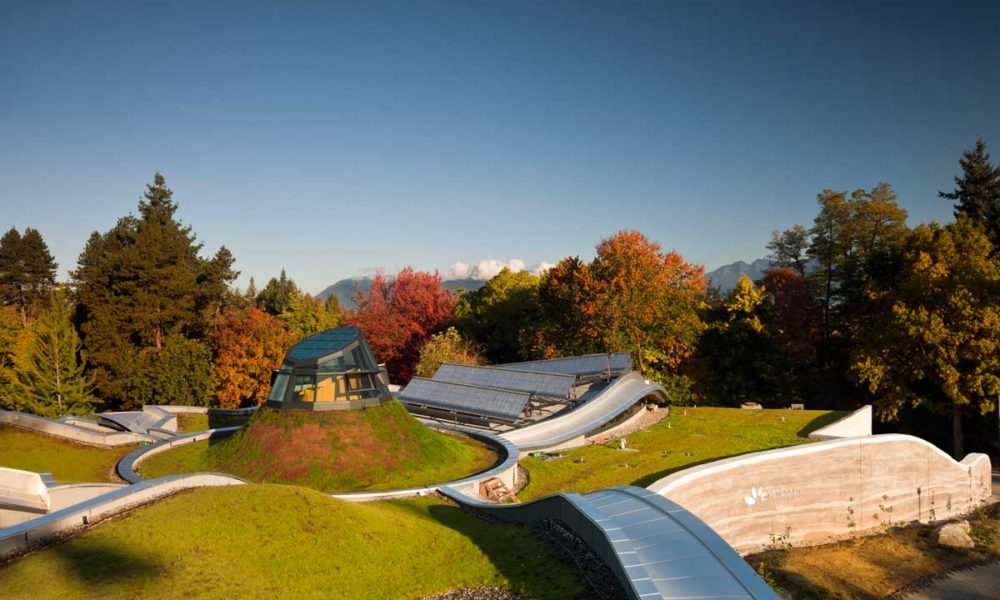Biophilic design was the reason I became an architect. I developed a deep-rooted love of life when backpacking around Australia in my early twenties. The sheer beauty of the country, its unique flora and fauna, and the vast expanse of pristine land was life changing. The Australian landscape stood in stark contrast to the developed cityscapes of England where I grew up.
I entered architecture with the commitment to connect people and nature through the buildings that we spend 90% of our time within. Most of us have experienced buildings where the movement of the sun through the sky creates shadows and pools of light that connect us to the time of day, the season, and our sense of inner rhythm. There is a regenerative, lasting power in these moments, spurring the formation of memories that we carry through life.
For example, buying a home with a view will always come with a premium, and when eagerly making early reservation at a favorite restaurant we aim to get the table near the window. As occupants of buildings we are drawn to spaces that interact with nature. But often we are left with spaces that do not give us that choice, ones that have no windows, no fresh air, or views of anything other than a wall and parking lot.
Biophilic design has been practiced for thousands of years, but since the industrial age we have used our buildings to assert domination over nature and to highlight our separation from it. Once electricity became widespread, naturally ventilated and lit buildings became a thing of the past. Energy was apparently plentiful and able to be wasted. People became reliant on automation of their air and were trained to be passive observers and to no longer manually open windows or pull down shutters. With the advent of the air conditioner we could be kept at a perfect temperature, no matter what the external environment. Now that the impacts of global climate change require us to move to urgent solutions, buildings and their 40% share of the energy consumed are an essential influencer. We have to radically reduce the energy consumed by buildings in order to meet the goals established at the UN Climate Change Conference (COP21) in Paris earlier this year, and our approach to designing buildings has to be unraveled in order to move us beyond small incremental change.

Biophilic design is a conscious discipline, and has the potential to intentionally reconnect people and nature through buildings. Some project teams have tried it out by adding plants and trees or a fountain in their buildings. Stopping there and going no further, these teams miss the power of this new discipline to completely revolutionize the way that we create and design our places. The opportunity of biophilic design is to connect to the particular ecology of the place, to its culture, history and beauty and to create a building that will regenerate life.

Today more than half of the world’s population lives in urban environments, and the UN projects that by 2050 that number will grow to 66%: “Urbanization brings opportunities for more efficient development and improved access to drinking water and sanitation. At the same time, problems are often magnified in cities, and are currently outpacing our ability to devise solutions,” commented Ban Ki-moon. City supplies of water, food, energy will have to double to match the need presented by urban growth. Within this future shuffle for needs, it is easy to see how place and nature could be lost. Biophilic city–scale initiatives, rooted in biophilic design, have sprouted up to combat this disconnection and produce positive community impacts: reinvigorated urban natural systems, economic capital resilience and a focus on quality of life.
In any crisis it is often simpler to isolate an issue and focus deeply on it alone. Yet, the solution that may fix that one issue will prove to make another worse. The crises we collectively face are not siloed. To achieve sustainability and resiliency, biophilic design and a systems-thinking approach that allows us to take inspiration from nature are required.
There is no easy checklist to bring biophilic design into mainstream design practice, no single guidebook, no rules and regulations that can be put into code language. It is a philosophy that requires a shift in thinking. But more profoundly, it requires each individual to draw on the instinct that guides us to pay more for a home with a view of a park, the mountains, or the water, or to live on a street lined with trees. If we were to listen to that instinct we would not need research that proves we are more productive, happier, and healthier when our buildings connect us to nature. That research is available, but research alone will not alone lead to adoption. If we are looking for proof—waiting for the doctor to prescribe that we take inspiration from nature—then we are missing the point and will miss the opportunity.
Stephen Kellert, Judi Heerwagen, and Terrapin Bright Green have developed thoughtful Elements and Patterns that create categories of biophilic design and provide a framework for integrating the thinking into a project. Projects are embracing these frameworks and making some strides, but for broad adoption to happen we still need a mind shift in thinking that is systems based. We need built examples that can demonstrate how their design approach was transformed because biophilic design was the driver for the design concept. We need built examples that intentionally pull on the instinctual connection to nature that is within all of us. We need built examples that demonstrate the transformation that occurred and the beauty that was created for every occupant of that space.
Together we must change the way we train architects and designers so that they can think and act systematically, developing inspirational tools to communicate this need with building owners and developers. For this reason, many of us with a passion for reconciling our relationship to nature and for regenerating life have joined together. Broad adoption of biophilic design is our mission. We believe we can only achieve this by many coming together, through looking systematically at the issue and addressing education, tools, resources, inspiration, collaboration, and research. There is no cost barrier, there is no regulatory barrier; the only barrier is ourselves—our behavior, our habitual patterns of thinking of nature as the other and as something to be dominated and ignored. Making systemic change to the design of the built environment will not happen overnight, but a movement is building.
To learn more about biophilic design and how to put it into practice, check out the Biophilic Design Initiative.



